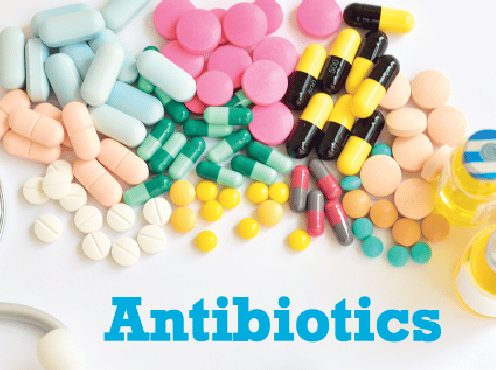Follow this rule if you’re raising pigs without antibiotics: “Sweat the small stuff.” That’s the advice from Doug MacDougald, DVM, Southwest Ontario Veterinary Services, Ontario, for any farm that wants to eliminate antibiotics without compromising animal welfare and performance.
Reflecting on his experiences with one client, he said “no antibiotics ever” (NAE) production is tedious and challenging work.
‘Care trumps economics’
His client, Sunterra Farms, has 17,000 sows in production, including 9,000 that were initially used in its NAE program. The company ventured into NAE because it saw a potentially lucrative market, MacDougald said. At the same time, however, Sunterra went into the new production scheme with a firm commitment to animal welfare.
“Animal care trumps economics — always,” the veterinarian said in an interview with Pig Health Today.
But entering this new line of pork presented a few challenges for Sunterra. For one, they had to fight the perception among some employees that pigs placed into an NAE program couldn’t be treated when they fall sick.
“That was our initial challenge,” he explained, even though they thought they had made it clear that individual pig treatments were still an option. “So, that ended up being a culture change — where [you] think about individual animal care and treat the pig appropriately and handle it appropriately, to achieve great animal care.”
Difficult work
Other challenges included fine-tuning some on-farm processes, such as managing colostrum and intake, and addressing subtle differences in weaning ages and receiving protocols.
In sum, he said, raising pigs without antibiotics is not easy and requires a high level of commitment at all levels.
“Truly trying to reduce antimicrobial use, fine-tune management and maintain the same or higher production parameters and pig care and survivability is very hard work,” MacDougald said.
He added that it is important for the pork industry to approach NAE “as responsible antibiotic use, not no antibiotic use” and be prepared to use antibiotics responsibly when the need arises.
“We want to have the appropriate amount of antibiotics to treat pigs effectively,” he said.
Biosecurity critical
By far the biggest concern in raising pigs without antibiotics is maintaining and improving biosecurity, he said.
“Because if there is a major new introduction of a primary pathogen like (porcine reproductive and respiratory syndrome) or mycoplasma or (porcine epidemic diarrhea) virus, then all bets are off for a period of time because there’s simply sick animals,” he added.
MacDougald said the ongoing focus at Sunterra Farms is on identifying the primary bacterial pathogens that drive individual and, in some cases, population treatment. They want to understand those better, identify which ones are pathogenic and develop control measures for reducing the impact on pig health while minimizing the need for antimicrobial use, he said.
“We don’t have enough information on how to prevent some of the primary viruses or disease challenges that are introduced in the new herds,” he said, noting that viruses often lead to secondary bacterial infections requiring antibiotic therapy.
“And those [pathogens] drive antimicrobial use…because we need to effectively respond to pig health and pig welfare. So, we do and will need to use antibiotics in the future” even when the goal is NAE.
Pig Health Today, December 12, 2018
The South African Pork Producers’ Organisation (SAPPO) coordinates industry interventions and collaboratively manages risks in the value chain to enable the sustainability and profitability of pork producers in South Africa.








